My gardens are always changing, in flux. Not only do the plants change throughout the seasons, but I am often adding, changing, moving or rearranging! So I thought I’d share with you the state of my garden right now.
This post may contain affiliate links. See my disclosure policy here.

I have 3 major garden areas now: the big, “back” garden which is really on the side of the house, the garden by the creek, and the tree guild. We are in zone 6b which determines what thrives in our area. Check your zone by your zip code here.
The State of My Back Garden
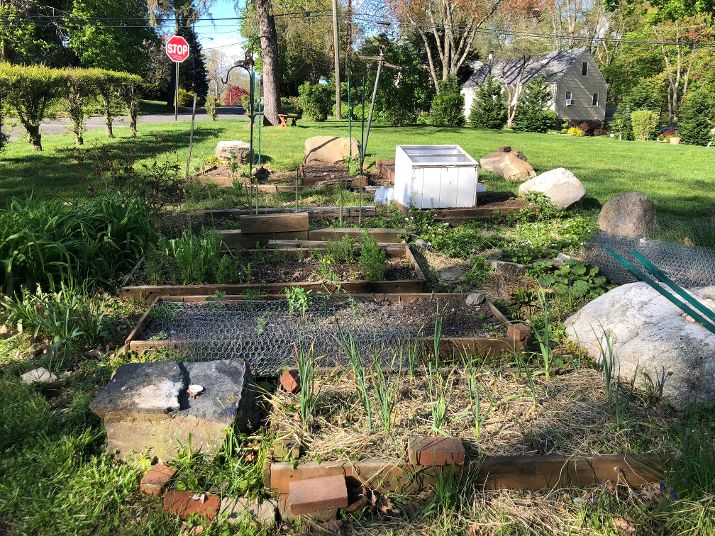
I started with the big back garden in 2006. My husband and I put in a Herculian effort to remove many boulders from the area. Several of the bigger rocks still surround the area and there are a couple that could never be pulled out without heavy equipment. Such is gardening in Connecticut. I started this space as an herb garden with stone paths separating areas for flowers and vegetables. It has evolved repeatedly and is now primarily vegetables including two perennial plots, one for asparagus and one for strawberries. The entire garden slopes gently down hill which is great for drainage but susceptible to erosion. Adding raised beds has really helped cut down on soil loss.
This spring we needed to move three of those perimeter rocks to put in two new raised beds. Those rocks will be staying put until we finish the chicken coop and get our little hens moved in. I planted Snow Peas in March and gradually added Rainbow and Scarlet Nantes Carrots, Watermelon Radish and China Rose Radish, Provider Bush Beans and Tri-Color Bush Beans, Red Beets, and Chard.
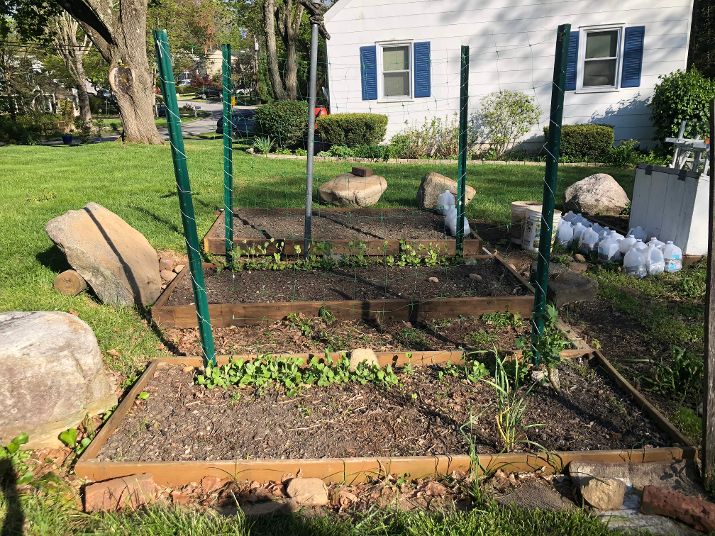
3 Raised Beds at the Top of the Back Garden 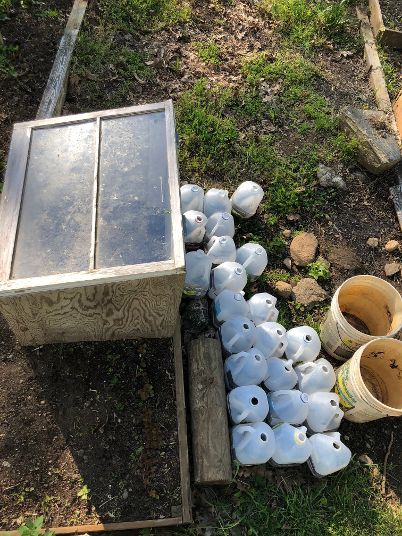
A Cold Frame and Winter Sown Jugs 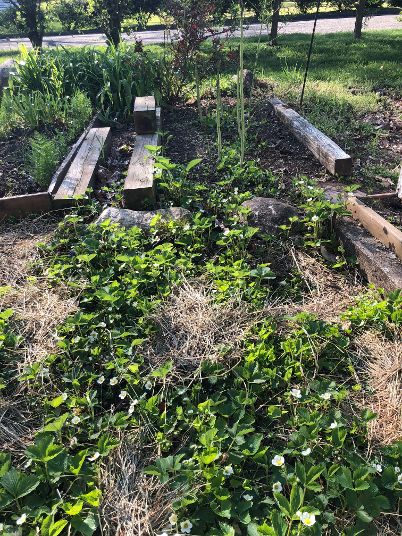
Strawberry and Asparagus Beds 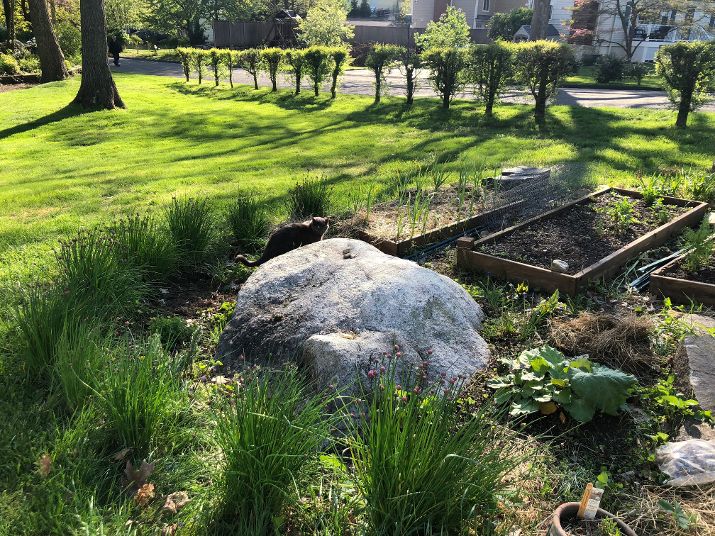
Raised Beds amd Herb Garden around the Boulder 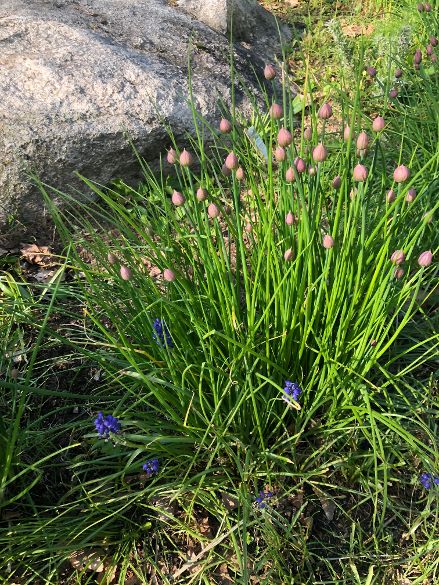
Chives and Grape Hyacinth in the Herb Bed 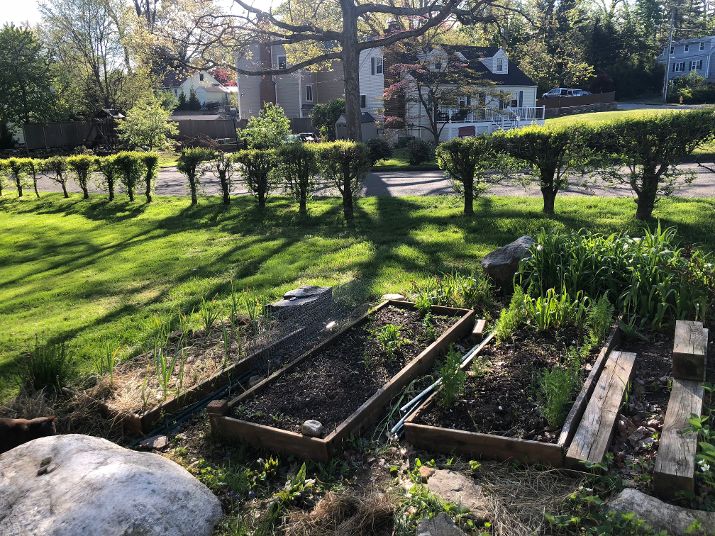
3 Raised Beds at Bottom of Back Garden
A half step down from those 3 raised beds is my unplanted potato plot, a cold frame helping some kale and lettuce grow faster, and most of my winter sown milk jugs (More on that in a future post!). I just picked up some Red Pontiac seed potatoes and received some purple sweet potato starts I ordered, but I think I should rotate their location to prevent potato beetles which have probably overwinterd in the soil.
The State of my Perennial Beds in the Back Garden
The next tier has my strawberry bed and my asparagus patch. Asparagus takes years to grow enough to harvest, but I love the idea of perennial food crops that can feed a family year after year. Last year, I added a few new strawberry plants to that bed. Come fall, I’ll move some of the best plants to a fresh bed and augment the soil in this one with compost. I may even try planting a nutrient rich cover crop this fall that will be turned into the soil after it has grown. Read more about composting here.
There are three raised beds at the bottom of the garden too. The lowest one has garlic I planted in October and some kale and lettuce I direct sowed in March. In the second bed from the bottom, I planted seed for cold hardy vegetables like turnip, mustard, radishes and chard. A few sorry-looking kale plants remain from last summer and give me a bit of kale to perk up my grocery store romaine until all my fresh greens come in. When I decide what will be planted in the third bed from the bottom, I’ll need to pull out the leftover carrots I planted too late last summer.
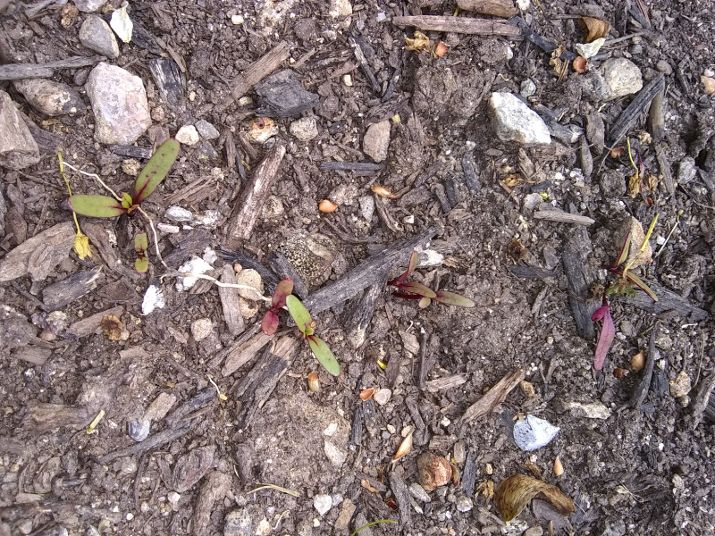
Red Beets, Early May 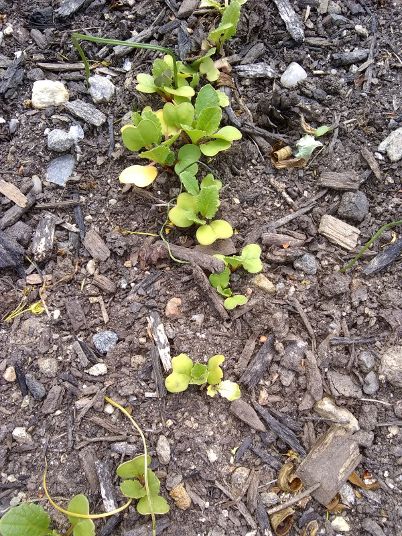
Turnip 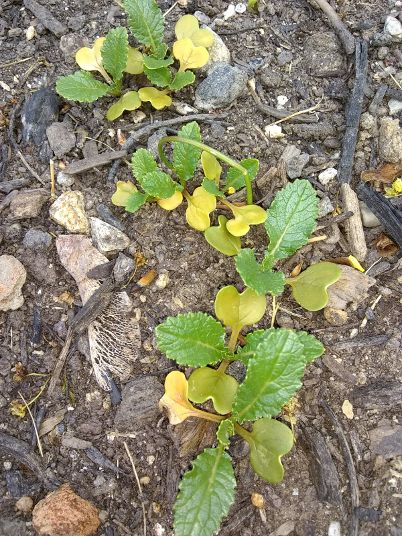
Radish, Early May 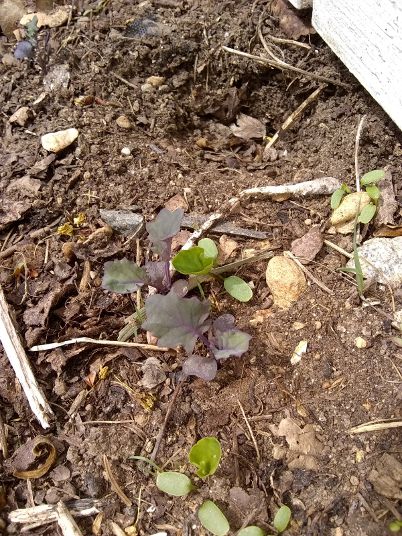
Scarlet Kale Remnants after Animals Dug in Bed 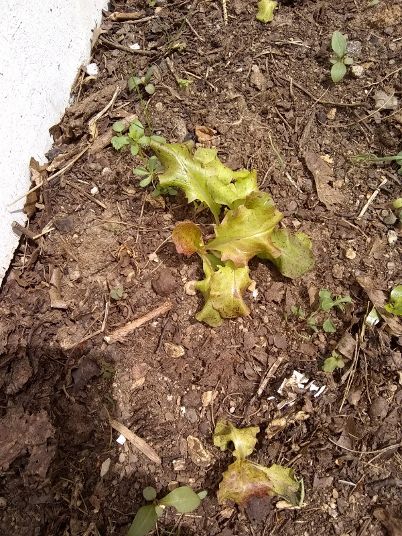
Red Lettuce in Cold Frame 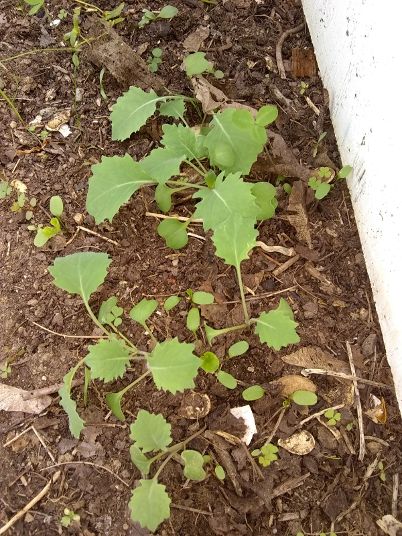
Kale in Cold Frame
Most of my herbs are planted around a giant boulder which is going nowhere! The border of chives is about to burst into lovely lavender blooms. Sage, thyme, marjoram, sorrel, lavender and tarragon are all back! The grape hyacinth and violets that were in the garden are trying to take over. I’ve moved some to my tree guild and I harvest a lot of violet leaf and flowers for salads, but I’ll still have to dig a lot out.
The State of My Creek Garden
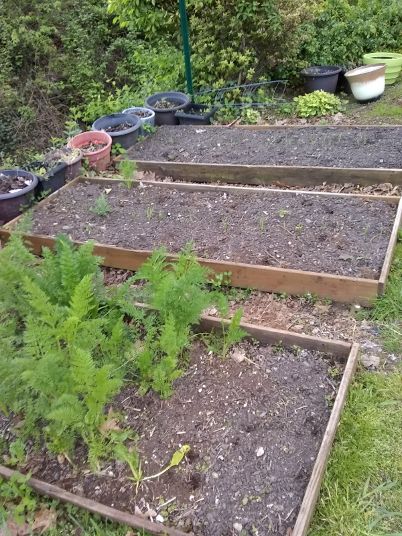
Raised Beds and Containers along the Creek. 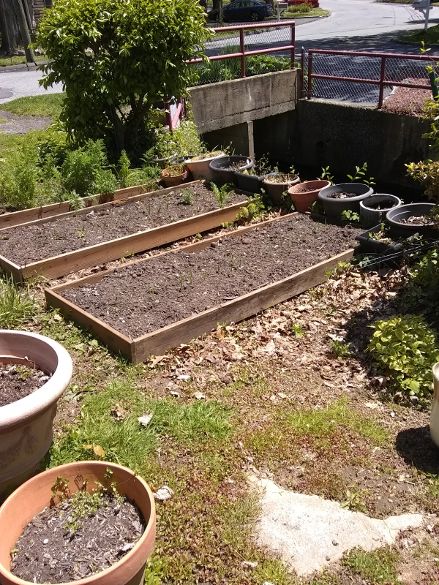
Creek Garden with Creek Behind 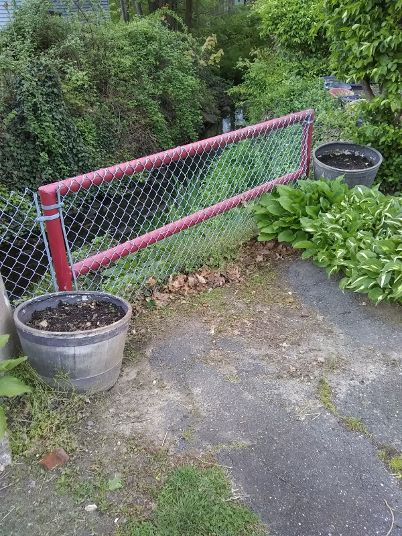
Cucumber Barrels by Creek 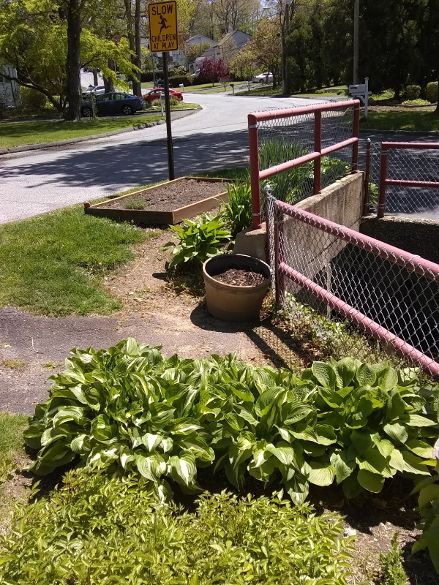
Front Bed of Creek Garden Is Above Creek where it runs under the road. 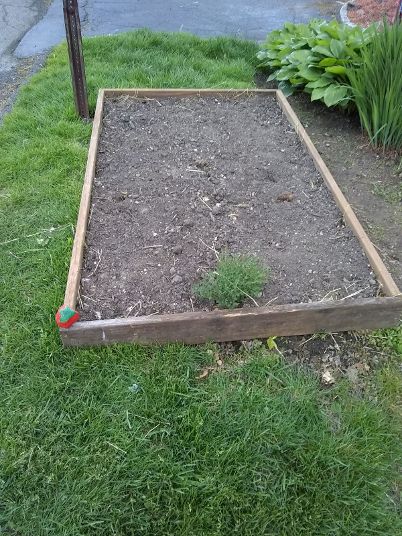
Front Bed over the Creek 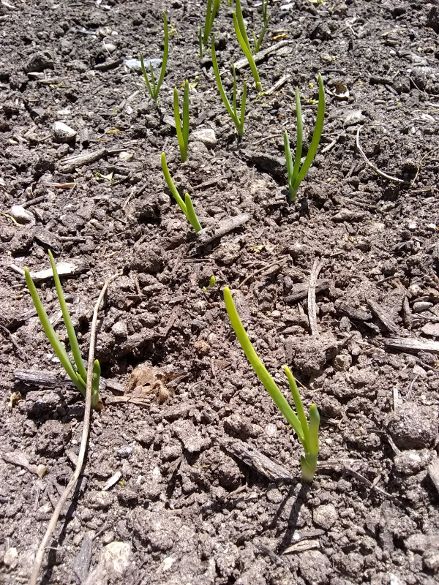
Double Row of Onion Sets Sprouting Nicely
In 2015, our neighbor removed a diseased tree from along the creek we share. Suddenly, there was so much sunshine on our side and I knew I had to take advantage of it! Initially, I started moving a few containers to the area to grow beans and tomatoes with more sun than I had in my big back garden. By the time I had a few dozen containers in 2018, I decided to put in raised beds where my beans, eggplant, kale, cabbage, onions and more flourished. I still augment the raised bed space with additional containers.
Last year I harvested so many pounds of green bush beans I kept trying more recipes to eat them up in all their freshness. I still have last year’s chard growing in one bed where I had a cold frame until recently. All the feathery greens in the left hand bed in the first two pictures above are more carrots that weren’t grown enough to harvest last year. Sadly, they are bound for the compost bin (or some treats for my chicks!) See my Chicken Photo Gallery here!
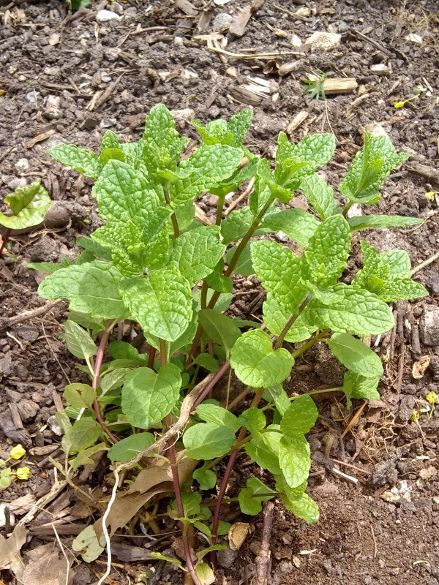
Peppermint in Early May 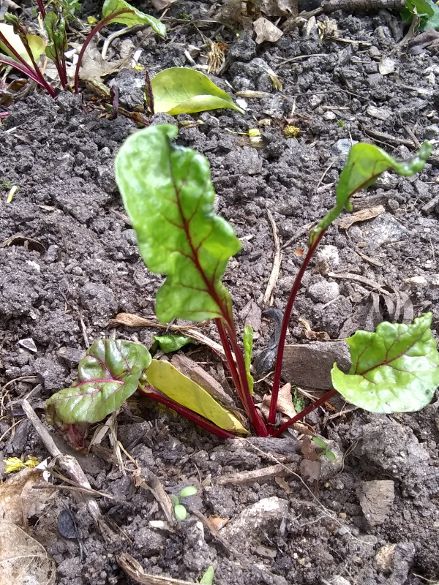
Chard Overwintered under a Cold Frame 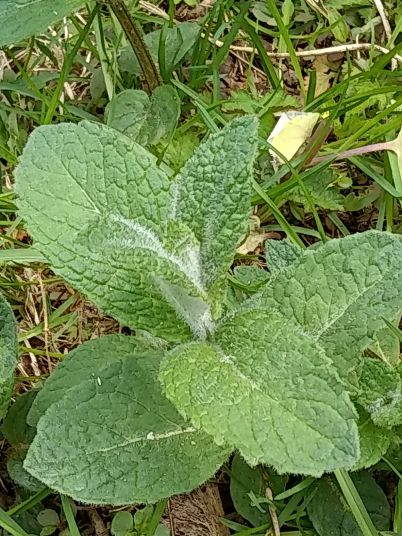
Apple Mint
For 2020, the Creek Garden will be filled with sun loving tomatoes (5 different kinds!), onions, peppers, and basil. The bed that goes over the creek has already been planted with Sunflowers, Zinnia, Nasturtium and Red lettuce for a blaze of color.
The Tree Guild
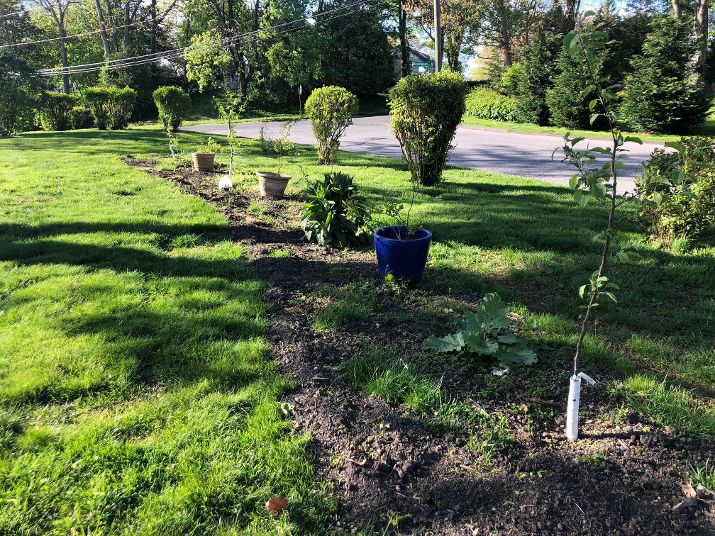
In 2018, I also put in our apple trees. I chose 4 different varietes our family likes and planted them in the front yard. Over the next several months I learned about what plants benefit fruit trees and about food forests and tree guilds. My tree guild usually falls lowest on my priority list, but will be very self sustaining as I expand it. Briefly, a tree guild is an interdependent growing space with several different types of plants that support the trees by subduing weeds, attracting pollinators, repelling pests or growing deep roots to bring up healthy minerals from deep in the soil.
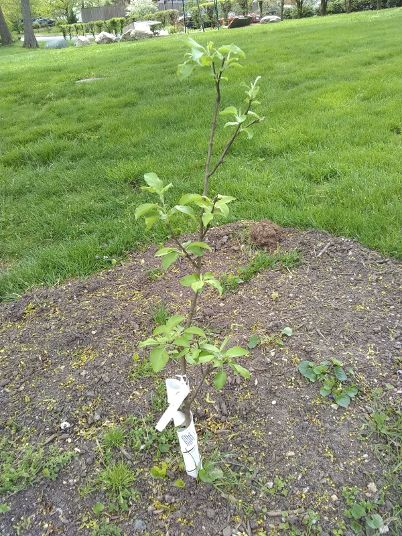
Granny Smith Apple Tree, 2 years old. 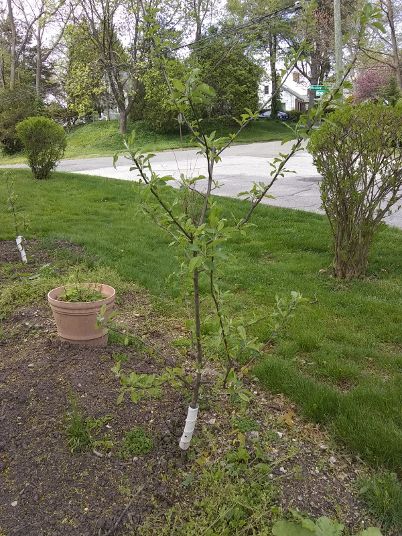
Gala Apple Tree, 2 years old. 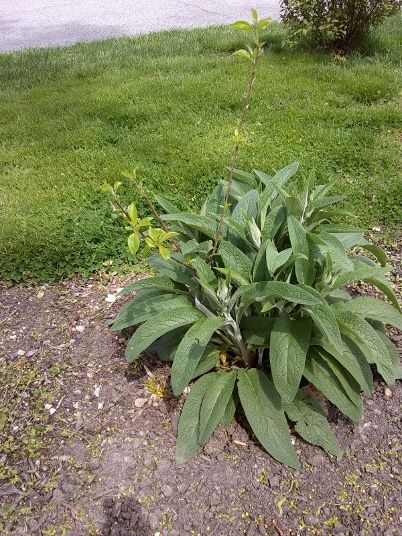
Golden Delicious Apple Tree and Comfrey 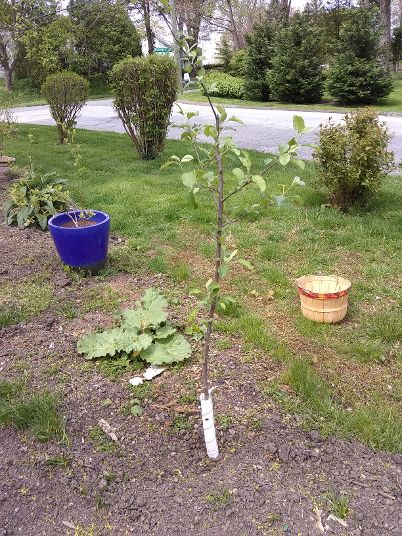
Fuji Apple 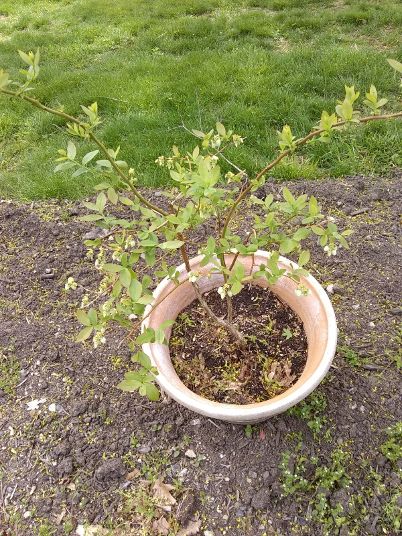
Blueberry Bush 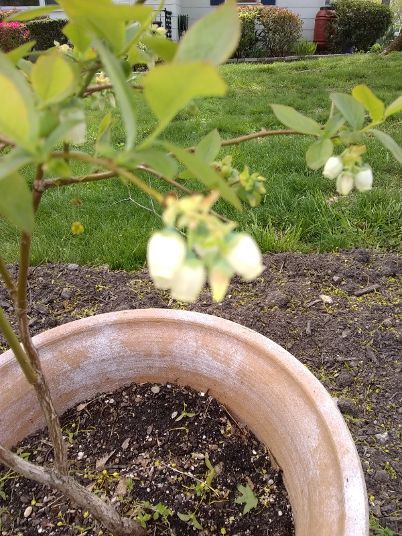
Blueberry Blossoms 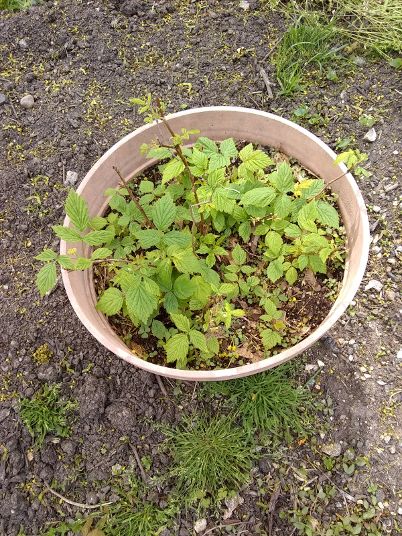
Raspberry Bush 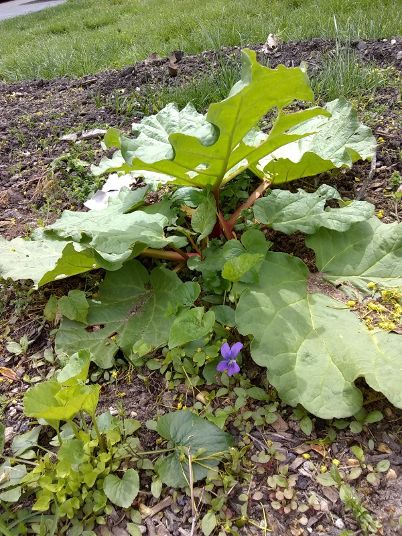
Rhubarb
In addition to the apple trees, I have one raspberry and two blueberry bushes in the guild. After I harvest the berries, I plan to put those plants in the ground. Rhubarb, transplanted from the back garden in the fall, is just about ready to harvest. Dill and Cilantro seeds went in this week.
The State of My Garden Goals
My Garden Journal for 2020 has a long list of goals. Thankfully, I’m already making progress with the addition of more raised beds, gradual expansion of the tree guild, winter sowing and indoor seed starts done, and using almost all heirloom seed.
We still need to fence in the garden areas. Last summer, we picked up the materials for the back garden fence at a yard sale for $5 because we offered to remove it from an old, overgrown garden! I’m in the process of rotating the plants between beds for their health, the health of the soil, and to deter insects. My husband and I created a couple frames to put over the beds that have kale and my daughter and I will cover them in tulle to try to beat the 3 different pests that liked my kale way too much last year.
This year I will be mulching more, preserving more of my harvest for winter and saving seeds from all my plants if at all possible.
By this weekend I will start planting out the many varieties of vegetables I started inside and my gardens will look completely different. I think the state of my garden is very good! To see when you can plant tender tomatoes and such outside, check your last frost date here, and watch the 10 day forecast too.
Are you planting vegetables this year? Please share your plans in the comments below and feel free to ask questions!

And if you want to learn more about gardening including what has or hasn’t worked for me, please sign up for my newsletter here.
Pingback: Protecting the Garden from Insect Damage | My Frugal Nature
In your vegetable gardens, do you use regular topsoil?
Great question! By itself, regular topsoil won’t provide all the nutrients your plants need. I add a lot of compost, coffee grounds and mulch. When I create a new raised bed, I layer old hay, compost and topsoil. Organic matter is essential!